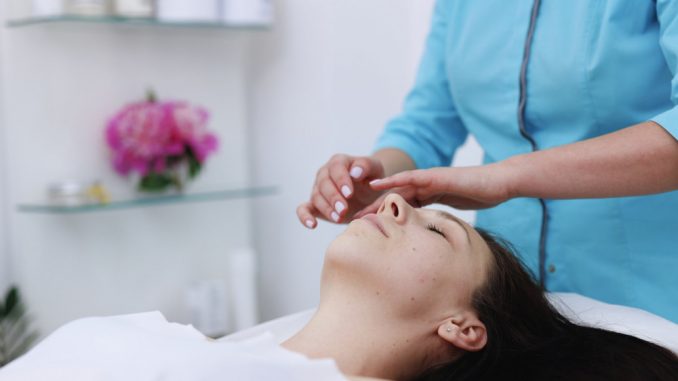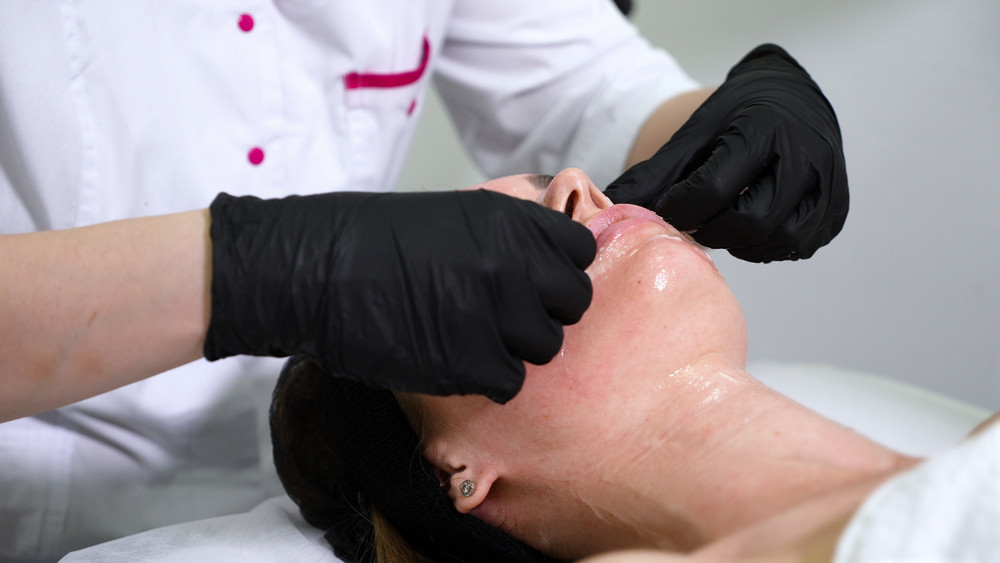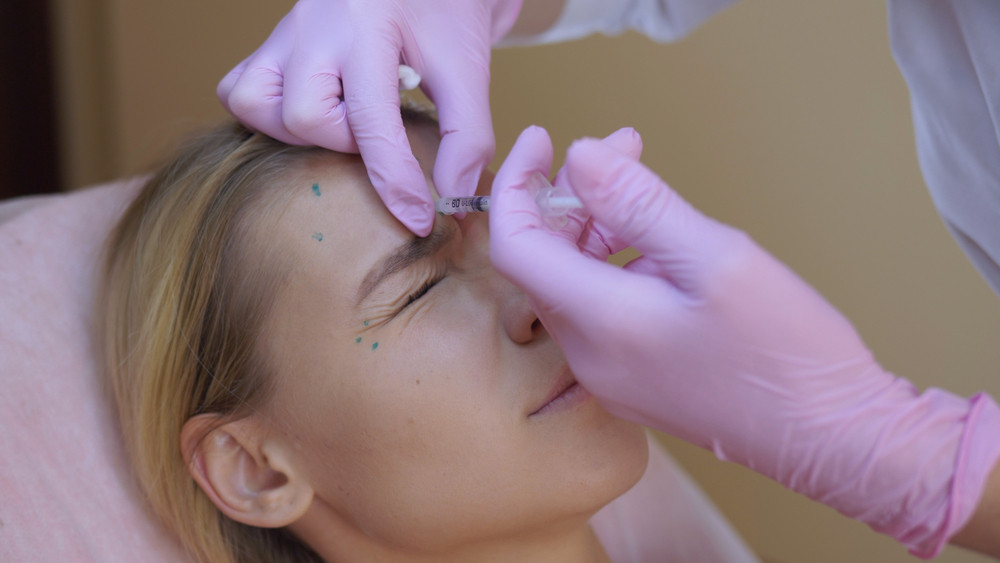

Highlights
- LED light therapy uses specific wavelengths of light to target acne-causing bacteria and reduce inflammation.
- Blue and red light are the most effective wavelengths for acne treatment and skin healing.
- The therapy is painless, noninvasive, and safe for most skin types when administered by professionals.
- Consistent sessions improve skin clarity, minimize breakouts, and enhance overall tone and texture.
- LED therapy works best when combined with a balanced skincare routine and professional guidance.

Understanding LED Light Therapy
LED (Light Emitting Diode) therapy is a noninvasive skincare treatment that uses light energy to stimulate natural cellular functions. Initially developed by NASA to promote wound healing, it is now widely used in dermatology and med spas to address acne, inflammation, and signs of aging. The treatment works by exposing the skin to specific light wavelengths—each penetrating at different depths to trigger targeted biological responses. Unlike laser procedures, LED therapy emits low-level light that does not cause heat damage or require downtime.

How Light Wavelengths Target Acne
Different colors of light have distinct therapeutic benefits. For acne control, blue and red wavelengths are most effective. Blue light, typically around 415 nanometers, targets Cutibacterium acnes (formerly Propionibacterium acnes), the bacteria responsible for inflammatory acne. When exposed to blue light, the bacteria release reactive oxygen species that destroy their cell walls, effectively reducing bacterial populations on the skin. Red light, around 630–660 nanometers, penetrates deeper layers to reduce inflammation, promote healing, and minimize scarring. The combination of these wavelengths provides both antibacterial and anti-inflammatory benefits.
The Science Behind LED Therapy
LED therapy works through a process known as photobiomodulation. When skin cells absorb light energy, it stimulates mitochondrial activity, increasing adenosine triphosphate (ATP) production. ATP serves as the energy currency of cells, accelerating repair, collagen synthesis, and immune response. As inflammation decreases and circulation improves, the skin becomes less prone to clogged pores and breakouts. According to JAMA Dermatology, red and blue LED devices have been shown to significantly reduce mild to moderate acne lesions with minimal side effects compared to control treatments.
Benefits Beyond Acne Reduction
While LED therapy is primarily known for controlling acne, it also enhances overall skin health. Red light stimulates fibroblast activity, which supports collagen and elastin production—key elements for smooth, resilient skin. Some systems incorporate near-infrared wavelengths that aid in deeper tissue regeneration and circulation improvement. Over time, patients often notice reduced redness, improved texture, and a more even complexion. These cumulative effects make LED therapy an excellent complement to other med spa treatments like chemical peels or microneedling.
Safety and Suitability for All Skin Types
One of the advantages of LED therapy is its safety profile. Because it does not use ultraviolet (UV) light, there’s no risk of sunburn or long-term UV-related damage. The procedure is pain-free, requires no anesthesia, and suits nearly all skin tones and types, including sensitive and acne-prone complexions. Treatments can be performed on the face, chest, or back, depending on where breakouts occur. Most clients describe the experience as relaxing, often comparing the gentle warmth of the LED device to a comforting spa facial.
What to Expect During a Session
During an LED light therapy session, the skin is first cleansed to remove makeup, oils, or debris that could interfere with light absorption. Protective goggles are applied, and the LED panel or handheld device is positioned a few inches from the skin. The session typically lasts 15 to 30 minutes. Patients may feel mild warmth but no discomfort. Afterward, normal activities can resume immediately, making LED therapy an ideal “lunchtime” treatment. For lasting improvement, med spa professionals usually recommend a series of sessions over several weeks.
Combining Blue and Red Light for Optimal Results
Blue and red light therapy are most effective when used together. Blue light eliminates bacteria on the skin’s surface, while red light calms inflammation beneath it. This dual-action approach treats both the cause and symptoms of acne simultaneously. Some advanced LED systems alternate wavelengths during a single session for convenience and efficiency. Combining both lights not only clears active breakouts but also reduces the risk of post-acne marks or scarring. Over time, the skin becomes clearer, calmer, and less reactive.
Aftercare and Maintenance
Post-treatment care for LED therapy is minimal. Because it’s noninvasive, patients can immediately return to their normal skincare routine. However, med spa professionals recommend using gentle cleansers, hydrating serums, and daily sunscreen to maintain results. Avoiding aggressive exfoliants or harsh topical medications helps prevent irritation between sessions. For best results, LED therapy should be incorporated into a broader acne management plan that includes consistent cleansing, balanced diet, and professional-grade skincare products.
How Often Treatments Are Needed
The frequency of LED sessions depends on the severity of acne and skin response. Many patients notice improvement after three to four treatments, though optimal results typically occur after eight to ten sessions spaced one week apart. Maintenance treatments every few months help sustain the benefits. Like exercise, consistency is key—ongoing stimulation of cellular function keeps pores clear and inflammation low. The cumulative effect is smoother, clearer skin that maintains its natural glow.
At-Home LED Devices vs. Professional Systems
Consumer LED masks and handheld devices have become popular for home use, but they differ significantly from professional-grade equipment. While at-home devices offer convenience, their lower light intensity means slower results. Professional med spa systems deliver controlled, medical-grade wavelengths at higher power, ensuring deeper penetration and faster improvement. 3Consulting a licensed provider ensures proper wavelength selection and treatment safety.
Potential Side Effects and Precautions
LED light therapy is generally considered very safe, with minimal risk of side effects. Mild redness or temporary dryness can occur but typically resolves within hours. People with photosensitivity, those taking certain antibiotics, or individuals with specific skin conditions should consult their provider before undergoing treatment. Protective eyewear is always used to prevent light exposure to the eyes. When administered under professional supervision, LED therapy is a gentle yet effective solution for acne management.
Combining LED Therapy With Other Treatments
For comprehensive acne control, LED therapy can be combined with other treatments such as chemical peels, microdermabrasion, or hydrafacials. The light reduces inflammation and bacteria, while other modalities exfoliate and rejuvenate the skin. Providers often customize treatment plans to address both surface-level congestion and deeper imbalances. This integrative approach enhances clarity, reduces recurrence, and promotes long-term skin health. Patients seeking a noninvasive solution often find LED therapy to be an ideal foundation for ongoing acne maintenance.
Long-Term Results and Skin Health
The benefits of LED therapy extend beyond acne control. With continued use, the skin’s barrier function improves, sebum production balances, and pore congestion diminishes. Red light’s regenerative effects support ongoing collagen remodeling, leading to smoother and more resilient skin. Over time, many patients report fewer breakouts and improved confidence in their complexion. Regular treatments, paired with healthy skincare habits, make LED therapy an effective and sustainable component of any med spa acne management program.
LED light therapy offers a safe, gentle, and scientifically backed approach to acne control. By using targeted wavelengths to kill bacteria and calm inflammation, it promotes clearer and healthier skin without harsh chemicals or downtime. Whether used alone or in combination with other professional treatments, LED therapy provides lasting results through consistent care and expert supervision. Its versatility, comfort, and proven effectiveness make it one of the most trusted tools in modern med spa acne management.